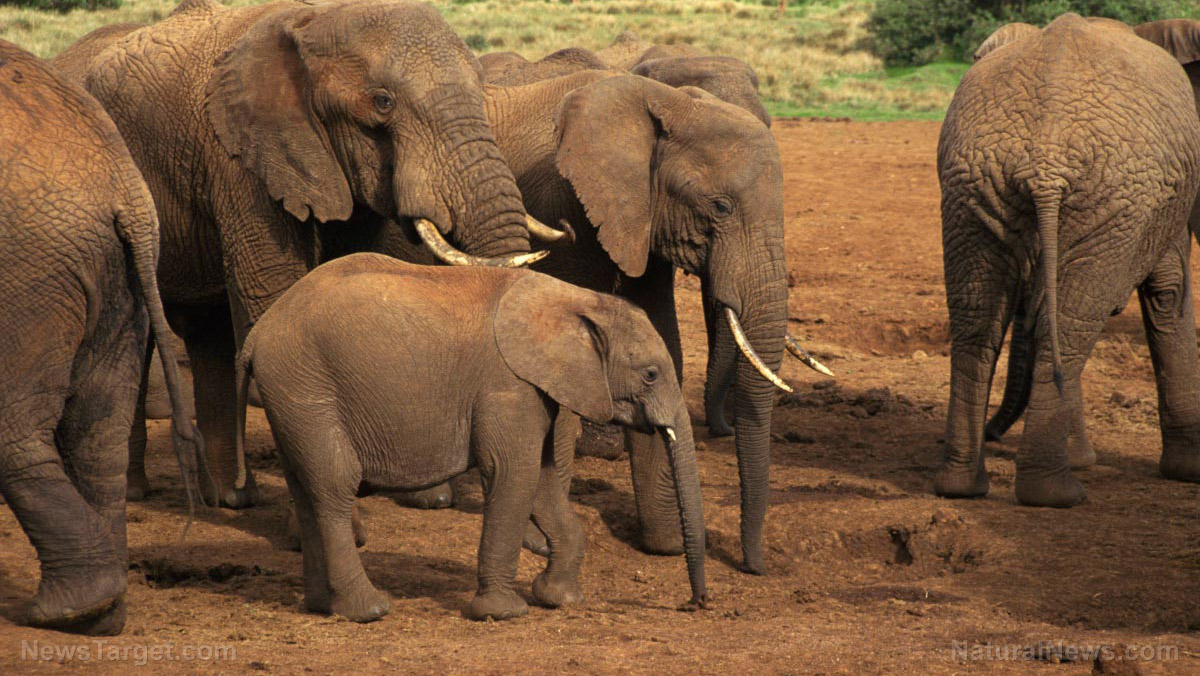
A ratty situation in Australia
The eastern portion of Australia recently suffered a plague of mice, with many crops lost to the rodents. The mice also made their way into grain silos, barns and homes. First introduced to the Land Down Under by European colonists, the mice have destroyed machinery and bit a number of Australians as of writing.
A June 22 report by the New York Post said inmates and staff members of a jail in New South Wales were evacuated after mice invaded the prison. Australian authorities relocated 420 inmates and 200 staffers at the Wellington Correctional Center as the rodents chewed away at the facility's electrical wires. Corrective Services NSW Commissioner Peter Severin said: "The health, safety and wellbeing of staff and inmates is our No. 1 priority, so it's important to us to act now to carry out the viral remediation work." (Related: Worsening mouse plague ravages rural Australia.)
Paying attention to the elephants in the room
Meanwhile, a herd of elephants hailing from the southwestern Chinese province of Yunnan gathered the attention of the world with its migration. The herd left its original home at the Xishuangbanna National Nature Reserve near the border with Laos – with scientists left baffled as to why. Elephant specialist Ahimsa Campos-Arceiz said: "For some reason, these elephants felt that their traditional home range was no longer suitable … and then they just left to find somewhere else."
Since the elephants started their journey in spring of last year, they had destroyed more than $1 million worth of crops. Chinese state broadcaster CCTV even aired a 24-hour live feed of the migration. Meanwhile, 3,500 people were evacuated from their homes. Hundreds of trucks were also deployed to ensure the elephants do not reach densely populated areas. Officials in China added that they are tracking the migrating elephant herd using drones round the clock for any signs of rampage. (Related: More like humans than most realize, Asian elephants are very social creatures with complex personalities.)
A ban on bear hunting became too much to bear for Slovakian hunters
Authorities in the central European country of Slovakia confirmed that a 57-year-old man died as a result of a brown bear attack. The victim's body with deep wounds on his neck and face was found in a forest near the village of Liptovska Luzna, around 190 kilometers northeast of the capital Bratislava. Slovakian state-run forestry enterprise Lesy Slovenskej Republiky said in a June 16 statement: "An autopsy confirmed … that the man died as a result of injuries caused by a bear."
Slovakia is home to between 1,200 and 1,600 brown bears – and they are protected by law in the country. However, the man's death has triggered an outcry from hunters claiming that bear numbers have become too high due to a hunting ban. The state-run forest enterprise has concurred with the hunters' sentiments by calling for the bears to be legally hunted.
The issue of wolf hunting divided people into packs
Back in October 2020, former U.S. President Donald Trump lifted federal protection for gray wolves. Following Trump's rescindment of the protection, the task of overseeing the wolves was put on states and tribes. It also opened up wolf hunts in states such as Michigan, Minnesota and Wisconsin once more. Minnesota Gov. Tim Walz, an opponent of recreational wolf hunting, called Trump's decision "disappointing."
On the other hand, farmers and hunters welcomed Trump's move. Wisconsin resident Ashleigh Calaway said that reducing wolf number via state-sponsored hunts would help prevent attacks on livestock. She added that her family farm lost 13 sheep during a July 2019 gray wolf attack. "It's allowing them to be managed to a level to lower the risk to sheep and cattle," Calaway said. In March 2021, licensed hunters in the Badger State killed 216 wolves – a fifth of the state's entire wolf population – within a 60-hour period to the chagrin of wildlife advocates.
Visit Ecology.news to read more articles about wild animals encroaching on human spaces.
Sources include:
Please contact us for more information.























